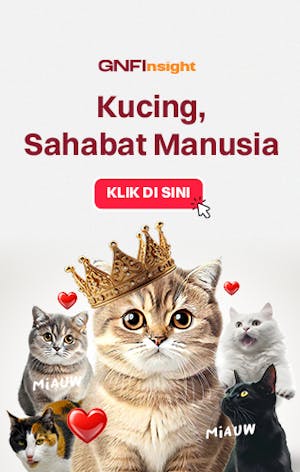A row of well-used, colorful toothbrushes stood out from advertisements in the British press inviting readers to the “Indonesian Eye” contemporary art exhibition at the Saatchi Gallery in London. Those eight toothbrushes were my friends’ that were returned to each owner after I photographed them” explained Angki Purbandono, a relaxed, down-to-earth artist from Yogyakarta. His Brush! acrylic photograph mounted on a neon box is one of the works by 18 Indonesian artists exhibited from Aug. 27 to Oct. 9 at the prestigious London gallery in Chelsea. “Indonesian Eye” is the continuation of a project of Serenella and David Ciclitira, who created the Indonesian Eye book, a compilation of contemporary Indonesian art, and organized a five-week exhibition in Jakarta last June. Nigel Hurst, the young but well-seasoned Saatchi Gallery director and chief executive, who is also one of the exhibition’s curators, told The Jakarta Post, “‘Indonesian Eye’ is a hybrid of works that bring in various elements of technology, digital work, fashion, a rapid expansion of ideas blended with an interesting mixture of historical background from Muslim, colonial, contemporary and traditional subjects.” He said the public interest had been “tremendous”. “To see arresting, strong works is an eye-opener for people who have never heard about Indonesia,” he said. Indeed, Rudi Mantofani’s nine-in-one yellow wooden electric guitar entitled Lost Note invites people to look around the object and admire the craftsmanship while also being fun but thought-provoking. Meanwhile, Heri Dono’s acrylic painting Playing Chess uses traditional elements in conjunction with wayang-influenced figures. In another room, Nindityo’s Dzikir attracted many responses, from rude to amused. “Looks like two hands scratching its arse. And the worn out effect makes it look more intense,” Sally, an art critic from Reading, 60 km west of London, said of the installation, which is quite large and makes a creaking sound. Mei Xin and her boyfriend, both students from China, were convinced that it was a giant spider. “It’s a concoction of interpretation beyond sensuality, feminine and masculine eroticism of hair buns that transform themselves into a vibrating giant insect, in rhythmic movement of the power of repetitive praying,” Nindityo said of his work. If Nindityo’s work invites controversial remarks, Julius Ariadhitya Pramuhendra’s black and white A Heaven’s Tale standing solo at the end of the room fascinated many viewers. The 3-by-1.9 meter charcoal on canvas work caught people’s attention before they entered the adjacent exhibition room. Lynette, a New Zealander who was vacationing in London, said she dreamt of having A Heaven’s Tale in her living room back in New Zealand. Unfortunately, the painting belongs to Edwin Rahardjo. “It’s simple, yet speaks many emotions, it involves the viewer in the atmosphere it creates, the subject can be a father and his son or a student and his teacher. It is executed beautifully.” Hurst said the project started a year ago. “We had to choose 18 artists’ works from over 150 portfolios. It was hard work, the number of works was more than expected. But, we’re delighted with the result. “It’s an exciting time for contemporary art. The art world is getting larger, what took years to develop years ago, nowadays there’s no time lapse. What is happening in London is happening in Jakarta at the same time.” For “Indonesian Eye” to have been hosted by the Saatchi Gallery must be considered a coup. The venue has hosted, amongst others, Anish Kapoor, whose next major work is the £22.7 million (US$35 million) Olympic steel tower, and Antony Gormley, whose Angel of the North sculpture has become an icon of the city of Newcastle. “In one word, Saatchi’s collections are arresting,” said David Potter, an art lover and chairman of the Quercus publishing house, who attended the exhibition’s opening party. “It has the wow, gosh and good heavens factors.” He said he found the “Indonesian Eye” exhibition vibrant and completely out of the ordinary. “If the country of origin was not labeled, the works could come from any country in the world. Like Andy Dewantoro’s Strange Day 3 looks like a Scandinavian noir.” “Brush! was produced in three editions each on different materials: paper, acrylic and aluminum composite,” said Angki, who trained in Fukuoka and said she admired the Japanese perfectionist bent and attention to detail. In preparing for the Fukuoka biennale, he mastered narration and composition. As an art student in 1996, he became a follower of Saatchi, with its original collection becoming an international reference. “Saatchi has the eye to see the latest style and influence people’s point of view on contemporary art” Angki added. Hurst said he strongly believes that Indonesia definitely stands out in the vibrant Southeast Asian contemporary art world. “It’s a wonderful opportunity to see more works coming from Southeast Asia, it is made easier with global dialogue. For the last 20 years people have been discussing global dialogue. Now with ‘Indonesian Eye’ it’s truly happening, not only mere words.” News Source: The Jakarta Post Posted on Good News From Indonesia by M.Q Rusydan
Cek berita, artikel, dan konten yang lain di Google News














